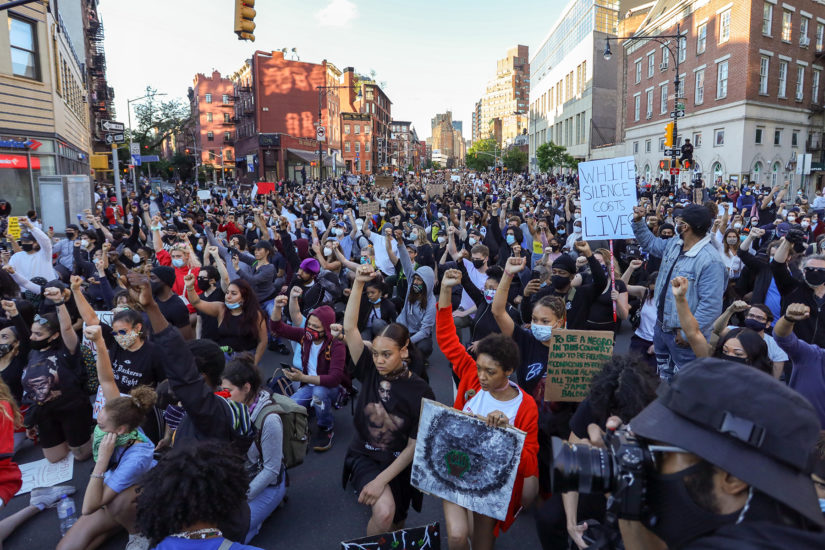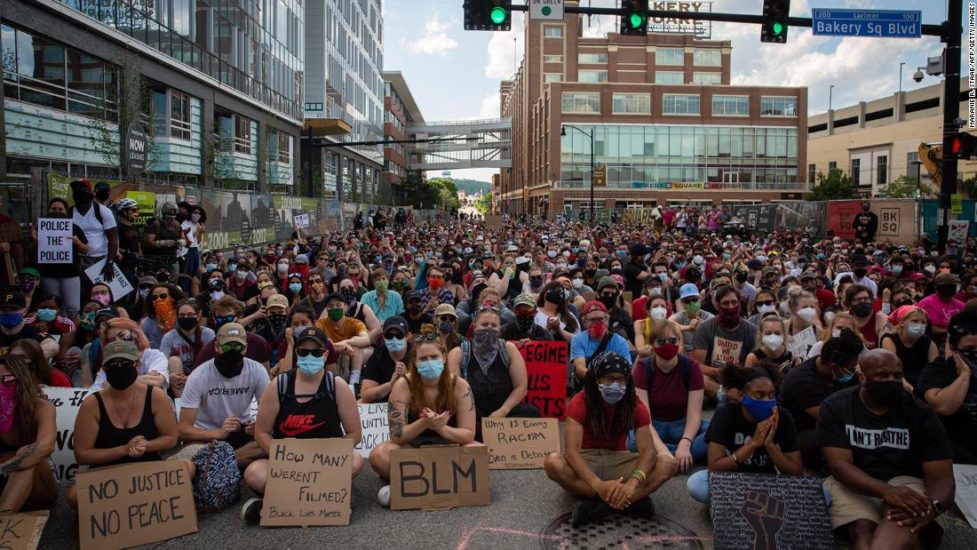The enormous, spontaneous, social protest movement that emerged following the video images of George Floyd’s death will be remembered for many things.
First among them is that the issue of police brutality against black men and women went national. It was a cause embraced by protestors in cities and towns large and small across the country (more than 140, and counting.) That didn’t happen in the 1960s. That didn’t happen during the Reagan years nor during the demonstrations against the U.S. war in Iraq. Public protests took place mostly on college campuses and a handful of large cities.
Also new was the leaderless construction of these gatherings. That wasn’t by accident. Contemporary activist organizations have learned that movements without a clear set of leaders are harder to vilify. It’s maddening for critics, and for much of the media, who want to interview and oftentimes, to demonize leaders in order to discredit a movement. A movement without a clear set of leaders keeps the focus on the issue, in this case police brutality (though not limited to it.)
Black Lives Matter, which formed in the aftermath of the shooting of Michael Brown in Ferguson, MO. in 2014 and Eric Garner a month earlier in Staten Island, N.Y., has consistently adhered to the leaderless form. The group has also learned a lot about the police, and police tactics; the oppressed are generally more perceptive about the oppressor than the reverse. Groups of white demonstrators are sometimes pushed to the front of a crowd as a means of showing police that the demonstrators are multi-racial while owing to the propensity of police forces to treat whites less harshly than blacks.

Importantly, the rallies, demos and gatherings, especially in cities smaller than New York or Los Angeles, have become teach-ins, opportunities to meet, to organize, to build local networks. More generally, the protests have become a gigantic coming-out party for a Millennial generation that has long been accused of being self-centered or unconcerned with the world around them. The fact is that this generation is naturally connected to social media, and its historically exceptional means to organize and inform. The ability to communicate quickly with like-minded people has made it possible to hold demonstrations anywhere at any time.
And then there’s the factor of Covid-19, and how that shaped these demonstrations. That these protests took place during an alarmingly dangerous global pandemic made for a decidedly younger demographic. Teenagers, men and women in their 20s and 30s, were more likely to brave fears of contracting this virus than older folks. After more than two months of quarantine, it was simply untenable to sit by idly while police killed an unarmed black man in broad daylight. Add to that picture a president who has long offered unveiled support for white supremacists, authoritarian dictators and the cruel treatment of undocumented immigrant, not protesting was indefensible.

Once the video of George Floyd’s brutal death went viral, thousands of young people, cooped-up inside of their homes, decided en masse that this murder, this death, in the midst of a pandemic and a deeply troubling presidency, was so serious that they would risk their own personal health to protest.
As for the gathering themselves, Covid cleared out the oldsters. There was no Jesse Jackson or Rev. Al Sharpton or even celebrities such as Susan Sarandon to lead the protests. The generation of the 1960s or the Reagan years or the Iraq War couldn’t play the elder card to take the microphone. Most importantly, this was a multi-cultural movement of black and white, Latino and Asian, African and European. And while some of the older-than-40 crowd weaved their way in, the crowds and crowds of protestors, whether amassed in Brooklyn or Boston, Columbus or Louisville, or even Fargo and Boise, skewed young. For political organizer anxious about getting young people to actually vote in November’s election, this organic participation in dissent was probably the best news of all.
The George Floyd protests protests have the potential to eclipse the anti-government Tea Party Protests that emerged in 2009 following the Obama Administration’s efforts to address the loss of jobs and housing caused by the Great Recession. The Tea Party movement was sparked by an on-air rant from the CNBC bond market commentator Rick Santelli when he used his usual live broadcast from the floor of the Chicago Board of Trade to assail Obama’s decision to assist distressed homeowners. It was pure populism. In Santelli’s estimation taxpayer money shouldn’t be used to “bail out” thousands of homeowners who had been forced to default on their loans. And millions of people agreed.
The Rant, as it became known, fueled the Tea Party Movement, a mix of libertarian and “small government” . and the Democrats loss of the senate in the mid-term elections of 2010 the accompanying ascendancy of Mitch McConnell as a national powerbroker hellbent on obstruction.
The Tea Party movement eventually petered out but its adherents found new life in the campaign and presidency of Donald Trump. The murder of George Floyd, meanwhile, has given form to a nascent movement that has been lying in rage for three years, simmering, exasperated, but not entirely sure how it could all come together.
One early sign is very positive: even as the focus turned to the issue of police oversight and accountability, the larger issue of alternative to police funding, took center stage. Calls to reduce the New York Police Department’s $6 billion budget by $1 billion, and spend that money on schools, job training and neighborhood improvements, has gathered steam leading credence to the notion that the George Floyd protests weren’t only about police brutality. There’s far too much going on.